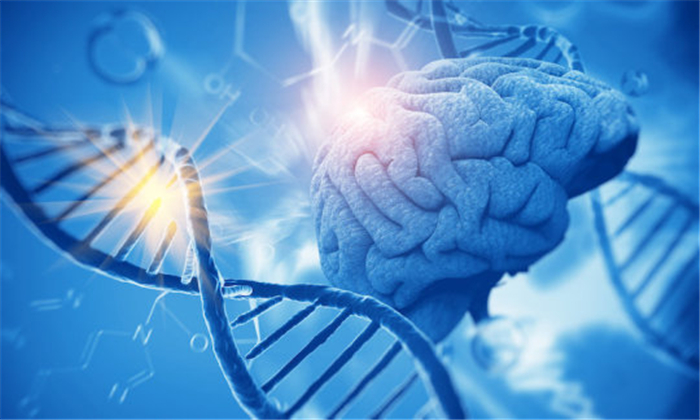


The cerebral cortex is the relatively thin, folded, outer "gray matter" layer of the brain crucial for thinking, information processing, memory, and attention. Not much has been revealed about the genetic underpinnings that influence the size of the cortex's surface area and its thickness, both of which have previously been linked to various psychiatric traits, including schizophrenia, bipolar disorder, depression, attention deficit hyperactivity disorder (ADHD), and autism.
Now, for the first time, more 360 scientists from 184 different institutions -- including UNC-Chapel Hill -- have contributed to a global effort to find more than 200 regions of the genome and more than 300 specific genetic variations that affect the structure of the cerebral cortex and likely play important roles in psychiatric and neurological conditions.
The study, published in Science, was led by co-senior authors Jason Stein, PhD, assistant professor in the Department of Genetics at the UNC School of Medicine; Sarah Medland, PhD, senior research fellow at the QIMR Berghofer Medical Research Institute in Australia; and Paul Thompson, PhD, associate director of the Mark and Mary Stevens Neuroimaging and Informatics Institute at the University of Southern California. Ten years ago, these scientists cofounded the ENIGMA Consortium, an international research network that has brought together hundreds of imaging genomics researchers to understand brain structure, function, and disease based on brain imaging and genetic data.
"This study was only possible due to a huge scientific collaboration of more than 60 sites involved in MRI scanning and genotyping participants," Stein said. "This study is the crown jewel of the ENIGMA Consortium, so far."
The researchers studied MRI scans and DNA from more than 50,000 people to identify 306 genetic variants that influence brain structure in order to shed light on how genetics contribute to differences in the cerebral cortex of individuals. Genetic variants or variations are simply the slight genetic differences that make us unique. Generally speaking, some variants contribute to differences such as hair color or blood type. Some are involved in diseases. Most of the millions of genetic variants, though, have no known significance. This is why pinpointing genetic variants associated with cortex size and structure is a big deal. Stein and colleagues consider their new genetic roadmap of the brain a sort of "Rosetta stone" that will help translate how some genes impact physical brain structure and neurological consequences for individuals.
Among the findings of the research published in Science:
· Some genetic variants are associated with cortical folding, measured as surface area, while other genetic variants are associated with the thickness of the cortex.
· Genes that determine surface area are related to very early development in the fetal cortex, while thickness appears to be driven by genes active in the adult cortex.
· People at genetic risk for depression or insomnia are genetically inclined toward having lower surface area, while people with a genetic risk for Parkinson's disease tend to have higher surface area.
· The vast scale of the project allowed the discovery of specific genes that drive brain development and aging in people worldwide.
"Most of our previous understanding of genes affecting the brain are from model systems, like mice," Stein said. "With mice, we can find genes, knock out genes, or over express genes to see how they influence the structure or function of the brain. But there are a couple of problems with this."
One problem is, quite simply, a mouse is not a human. There are many human-specific features that scientists can only study in the human brain.
"The genetic basis for a mouse is very different than the genetic basis for humans," Stein said, "especially in in the noncoding regions of the genome."
Genes contain DNA, the basic human code that, when translated into action, creates proteins that "do" things, such as help your finger muscles type or your heart beat or your liver process toxins. But only about 3 percent of the human genome codes for proteins. The vast majority of the human genome is called the noncoding genome. Much of this region is not shared between mice and humans. This noncoding genome consists of tiny molecular switches that can modulate the expression of other genes. These switches don't directly alter the function of a protein, but they can affect the amounts of a protein that is expressed. Turns out, most genetic variants associated with psychiatric disorders are found in the noncoding region of the genome.
These findings can now be a resource for scientists to help answer important questions about the genetic influences on the brain and how they relate to numerous conditions.
Aysenil Berger, PhD, director of Psychiatry Neuroimaging Research and director of the Frank Porter Graham Child Development Institute at UNC-Chapel Hill, is a co-author on the study.
The study was funded by national and international public and private funding agencies, including the National Institutes of Health, the Australian National Health and Medical Research Council, the Michael J. Fox Foundation, and the Kavli Foundation.
Source:
https://www.sciencedaily.com/releases/2020/03/200326160801.htm

Scheduled Server Maintenance and System Downtime Notice Dec 12, 2025

Celebrating CM Editorial Board Members Recognized in the Wor... Oct 10, 2025

Food Science and Engineering Now Indexed in CAS Database Aug 20, 2025

Contemporary Mathematics Achieves Significant Milestone in 2... Jun 19, 2025

Three Journals under Universal Wiser Publisher are Newly Ind... Apr 21, 2025